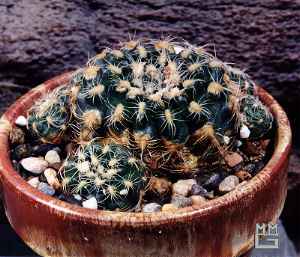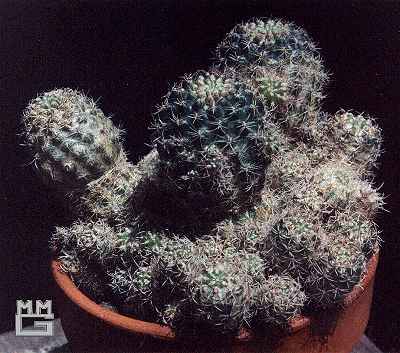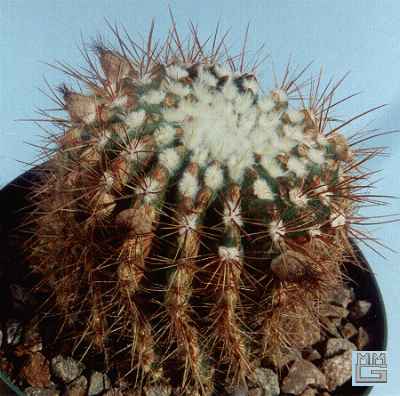 |
 |
 |
|
Gymnocalycium calochlorum showing scale that can turn a beautiful plant ugly. Usually I use a sharp ceramic tool to lift the hard crust, which serves as home and protection for the actual scale insects. Then I try to root an unaffected offset before it has been infected by scrubbing the offset with bacterial dish-soap and a toothbrush before setting up to dry before trying to root it. I've saved many cacti this way, and it does keep plants in my collection on the small side, plus this species blooms freely while still quite small with 2" fragrant flowers.
This being a favorite Gymno due to its lasting blooms and fragrance, I certainly did not want to loose it. I tried alcohol and pyrethrem dust and immediately removed it to an in-ground position beneath the greenhouse bench. It continued to worsen. Next, I sprayed it liberally with Safer's insecticide for houseplants, moved the plant into the ground outdoors, and I'm happy to say that the plant now appears well and is putting out new green plus offshoots and flowers. |
Lobivia shieliana with severe case of red mites, showing the way these pests veil infected plants with a thin, white, coating that starts near the base of the plant and works its way upward and across the clump. Usually, I plant such an infected plant outside, and new green growth eventually grows from the tops of the stems. It seems to start showing up as summer heat comes on. I used all the same old methods of control to try to save clean offsets of this deep-red-flowering beauty. In the past I'd tried scrubbing the white veil off with soapy water, vinegar or alcohol. Even tried a mild bleach solution applied with a brush, then spraying with alcohol. When fresh new green growth got large enough, I cut off the clean tips and re-root them. This way, I've managed to 'save' damaged plants through their cuttings. This year, I decided to explore using Safer products again
after reading about them in the email cactus/succulent discussion
group |
This Notocactus has taken several years to get in this very bad shape. What began looked like simple scale, and I used removed the scab, swabbed it with alcohol, then cleaned plant and roots and repotted it. For a while it put out a healthy new head, but then the same process started over again. Finally I took its picture to post here for others to see. The plant has since died.
|